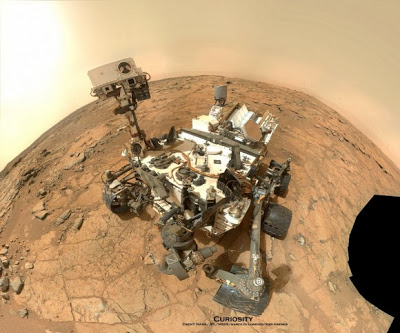

| Visitors Now: | |
| Total Visits: | |
| Total Stories: |

| Story Views | |
| Now: | |
| Last Hour: | |
| Last 24 Hours: | |
| Total: | |
Ancient Mars Lake Could Have Supported Life
A NASA team reported 10 months ago that the first rock [nicknamed "John Klein"] Curiosity drilled at “Yellowknife Bay” on Mars yielded evidence that met the mission's goal of identifying a Martian environment favorable for microbial life long ago. Yellowknife Bay's clay-rich lakebed habitat offers the key chemical elements for life, plus water not too acidic or salty, and an energy source. The energy source is a type used by many rock-eating microbes on Earth: a mix of sulfur- and iron-containing minerals that are ready acceptors of electrons, and others that are ready electron donors, like the two poles of a battery.
Not only has Curiosity accomplished its primary goal of finding evidence for an ancient environment that could have supported life, but it also has provided evidence habitable conditions existed more recently than expected and likely persisted for millions of years.
The lake may have existed until as recently as 3.7 Billion years ago, much later than researchers expected which means that life had a longer and better chance of gaining a foothold on the Red Planet before it was transformed into its current cold, arid state.
Source: http://nextbigfuture.com/2013/12/ancient-mars-lake-could-have-supported.html



